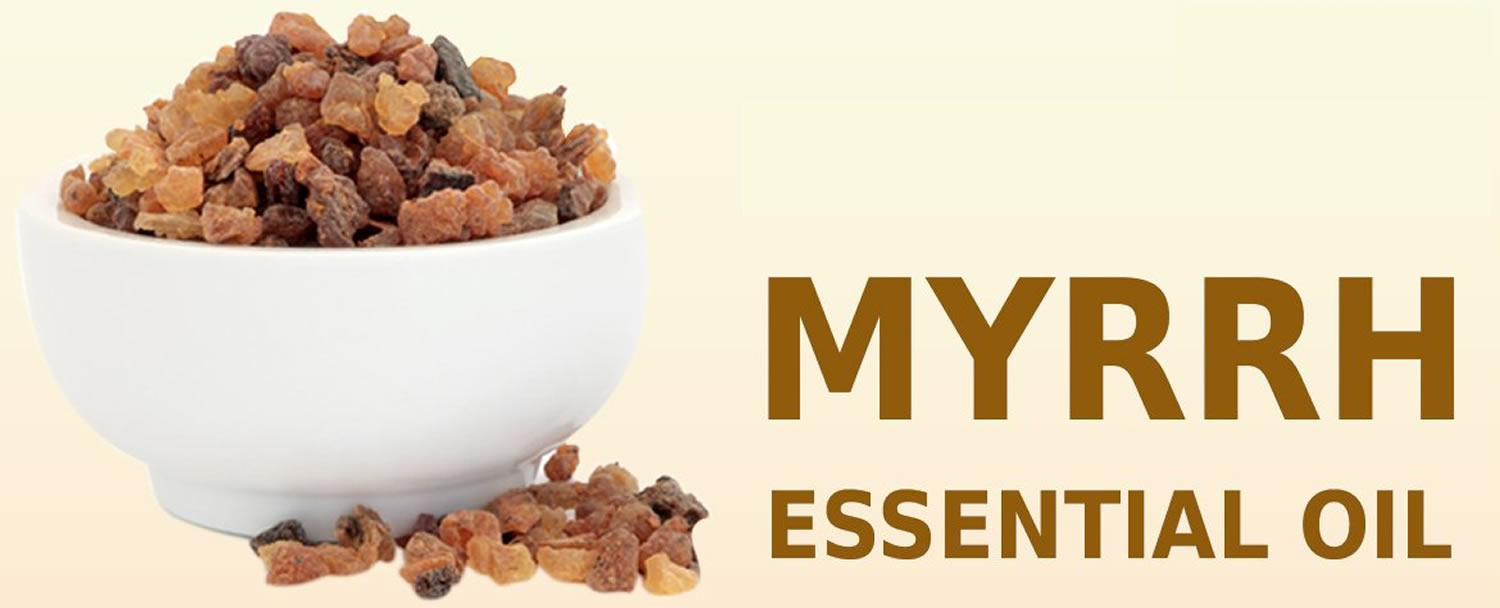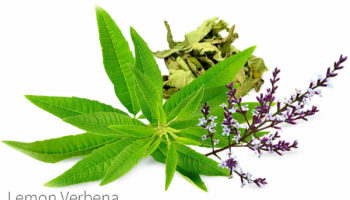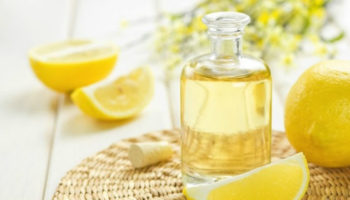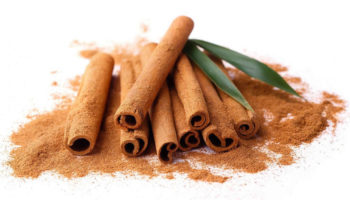What is myrrh essential oil
Myrrh is an oleo-gum-resin made from dried tree sap derived from the stem of different Commiphora molmol (family Burseraceae) which is native to Northeast Africa and the Middle East 1. The name myrrh is derived from the Arabic and Hebrew word mur, which means bitter. It is a reddish brown mass, covered with a brownish yellow dust. Myrrh has a bitter and acrid taste and a balsamic odor 2. With water myrrh forms an emulsion 3. Different species of myrrh have also been found in different countries. Myrrh contains volatile oil, resin, and gum 4. Sesquiterpenoids, nonsteroidal compounds found in myrrh, possess diverse biological functions, including antibacterial, anesthetic, and anti-hyperglycemic activity 5. Recent studies have shown that sesquiterpenoids may be anti-tumorigenic 6, 7, but the molecular mode of action remains unknown. It is one of the most widely used plants in traditional medicine as an effective analgesic, antipyretic, antibacterial, and antifungal 8. It has fasciolocidal, schistosomicidal, insecticidal, molluscicidal activities, and a potent activity against both intestinal and muscular stages of Trichinella spiralis 9.
Figure 1. Myrrh oil resin
Myrrh and frankincense have been used for medical purposes in China and India for thousands of years 10. In traditional Chinese medicine, frankincense and myrrh have synergistic effects when used in combination (generally in a 1:1 ratio), and the book Compendium of Materia Medica introduced the therapeutic characteristics of the combination of frankincense and myrrh during the Ming Dynasty. Modern pharmacological research has revealed that essential oils are the primary effective components in frankincense and myrrh oil that exhibit a broad spectrum of biological activities such as antimicrobial, anti-inflammatory, and antitumor activities 11.
Myrrh has been combined with gum resins in the anti-tumor prescription drug Xihuang wan (or Xihuang pill) for the treatment of cancer in China 12, 13.
Myrrh essential oil
Myrrh contains a 2-8% volatile oil (myrrhol), 23-40% resin (myrrhin), 40-60% gum, and a bitter principle 10-25% 14.
The constituents of essential oil in two kinds of myrrh were analyzed by GC/MS and identified with their percent contents 15. Myrrh essential oil contains cadinene, elemol, eugenol, cuminaldehyde, numerous furanosesquiterpenes including furanogermacranes, furanodiene, furanodienone, curzerenone, lindestrene as well as furanoeudesma-1,3-diene 16.
Myrrh essential oil uses
Commiphora molmol is the most important species of myrrh which has been used as an effective antimicrobial agent, it is one of the most effective herbal medicines in the world for sore throats, canker sores and gingivitis 19. It is useful for the treatment of acne, boils and arthritis 19. Myrrh has local stimulant and antihealing, antiseptic properties for wounds and abrasions. It is used as a mouth wash and as a uterine stimulant and emmenagogue 20. It is used in the treatment of infections in the mouth as mouth ulcers, pyorrhea as well as catarrhal problems of pharyngitis and sinusitis 19. It is excellent in sore mouth and extreme ulceration of mercurial ptyalism.
The extract of myrrh (gum) effectively decreases the absolute increment of blood glucose above the fasting concentration at all times of the oral glucose tolerance test in both normal and diabetic rats 21 and may prove to be a useful therapeutic agent in the treatment of non-insulin dependent diabetes mellitus 22. It is used also in cosmetic preparations for treatment of hair and scalp 23. Tincture of myrrh is used for the therapy of apthous ulcers (Stomatitis aphthosa) 24. Myrrh reduces cholesterol and triglycerides 25 and may terminate pregnancy 26. It exhibits strong antithrombotic activity 27. Extract of myrrh is used as digestive aid drug, and it is approved by the FDA for the use in food and oral health care drug products 28, 29, 30.
Myrrh is used in traditional Chinese medicine to relieve pain and swelling due to traumatic injury 31. It is used as a hypolipidaemic agent 32. Myrrh is useful in chronic gastritis and atomic dyspepsia with full pale tongue and membrane, as well as frequent mucous stouts accompanied by flatulence 19. It helps in the treatment laryngitis and respiratory complains.
The petroleum ether extract of myrrh from Commiphora molmol produced significant inhibition of carrageenan-induced inflammation and cotton pellet granuloma. It also showed significant antipyretic activity in mice 33. Recently the cytotoxic and antitumor activity of myrrh has proved to be equivalent to those of the standard cytotoxic drug cyclophosphamide 34. Thus treatment with myrrh (250 and 500 mg/kg/day) was found to be cytotoxic in Ehrlich carcinoma tumor cells in mice 35. The Commiphora molmol treatment (125–500 mg/kg) showed no mutagenicity. It caused a highly significant and dose-dependent mitodepressant effect in the femoral cells as well as reduction of RNA levels in hepatic cells as compared with the control (cyclophosphamide) 36. Myrrh from Commiphora molmol pretreatment, at doses of 250-1000 mg/kg, provided dose dependent protection against the ulcerogenic effect of different necrotizing agent used 37. It also offered protection against mucosal damage caused by indomethacin 37.
Treatment with the essential oil of myrrh significantly improved childhood atopic eczema. This may be due to a strong allergic contact dermatitis possibly provoked by the essential oils themselves 38.
The sesquiterpene fractions from Commiphora molmol, in particular furanodien-6-one and methoxyfuranoguaia-9-en-8-one, showed antibacterial and antifungal activity against standard pathogenic strains of Escherichia coli, Staphylococcus aureus and Pseudomonas aeruginosa, with minimum inhibitory concentrations ranging from 0.18 to 2.80 mg/ml. These compounds also have local anaesthetic activity blocking the inward sodium current of excitable mammalian membranes 39.
The botanical extract of myrrh could be used alone or in combination with sublethal doses of certain insecticides to control the cotton leafworm 40.
Histological examination of mosquito larvae treated with myrrh showed significant pathological effects on their fat, muscles, gut and nervous tissues 41.
Recently, a purified myrrh extract from methyl alcohol has been formulated as soft gelatin capsules, suppositories and emulsion known commerically as Mirazid which is considered a new safe antibilharzial drug with potential effects against Schistosoma mansoni and Schistosoma haematopium 42. In addition it is a potent fasciolicidal drug with a success rate of 94.1% 43.
Evaluation of the molluscicidal activity of mrryh from C. molmol on Biommphalaria alexandrina snails was studied, and it was proved that the activity is due to the oil extract rather than to the oleo resin 44. Fractionation of the oil extract led to the isolation of a bioactive component with molluscicidal activity (LC50 4.45 and 3.55 ppm) against the snails for exposure periods of 24 and 48 h, respectively 44.
The petroleum ether extract of myrrh from Commiphora mukul “guggul gum” decreased serum cholesterol, phospholipids, triglycerides and lipids in experimental hypercholesterolemic chicken, while ethyl acetate extract had less anticholesterolemic activity in rats 45, and it was effective as an hypolipidemic agent in dogs and monkeys 46. It was also used in the treatment of rheumatoid arthritis and obesity 47. The steroid which was isolated from Commiphora mukul showed anti-inflammatory activity 48. It showed a marked inhibition of ADP, adrenaline and serotonin induced platelet aggregation 49. It also showed a strong thyroid stimulatory action when administered to albino rats 50. It is used as expectorant, antispasmodic, uterine stimulant and emmenagogue (increases menstrual flow). It is successfully used in chronic bronchitis, bronchial asthma, and pulmonary tuberculosis, and also in amenorrhoea (an abnormal absence of menstruation) and menorrhagia (abnormally heavy bleeding at menstruation) to regulate menses 51. The ethyl acetate extract of myrrh from Commiphora mukul, in albino rats, significantly prevented a rise in serum cholesterol and serum triglyceride levels caused by atherogenic diet 52. The essential oil was found to be fungistatic or fungicidal to some ubiquitous molds, depending on the concentration 53. The resin of Commiphora guidotti is widely used in treatment of stomach complains, wounds and diarrhoea in Somalia 54. T-Cadinol, the pharmacologically active sesquiterpene of scented Commiphora guidotti was shown to have a dose dependent smooth muscle relaxing effect on the isolated guinea pig ileum and a similar inhibitory effect on cholera toxin-induced intestinal hypersecretion in mice 55. It caused bacterial lysis and subsequent fatal loss of intracellular components in Staphylococcus aureus 56. The resinous exudate from Commiphora abyssinica is sometimes applied as a plaster and used for spasms and fever 57. The washed bark, mixed with salt, is applied to snake-bites and the plant has been used as a stomachic (promoting the appetite or assisting digestion) and eye remedy.
Commiphora abyssinica extract exhibited a potent cytotoxic activity against KA31T cell line (10 mg/ml). The IC50 of this extract was 100 mg/ml against NIH3T3 cell line 58. The aqueous extract of the resin of Commiphora incisa significantly inhibited both the maximal edema response and the total edema response during 6 h of carrageenan-induced rat paw edema 59. The resin of Commiphora rostrata was found to be effective against predators and fungal pathogens 60. The bark and resin of Commiphora gileadensis are used as a cosmetic, soothing agent and to treat dog bites 61. The guggulipid of Commiphora wightii was shown to have hypocholesterolemic, antiseptic, anti-pathogenic, antiparasitic properties, and helps against non-specific diarrhoea and dysentery 62.
References- Analysis of frankincense from various Boswellia species with inhibitory activity on human drug metabolising cytochrome P450 enzymes using liquid chromatography mass spectrometry after automated on-line extraction. Frank A, Unger M. J Chromatogr A. 2006 Apr 21; 1112(1-2):255-62. https://www.ncbi.nlm.nih.gov/pubmed/16364338/
- Components, therapeutic value and uses of myrrh. El Ashry ES, Rashed N, Salama OM, Saleh A. Pharmazie. 2003 Mar; 58(3):163-8. http://docserver.ingentaconnect.com/deliver/connect/govi/00317144/v58n3/s1.pdf
- Trease, G. E.; Evans, W. C. : “Pharmacognosy”, 13th ed., 474; 1989.
- Attia RA, Mahmoud AE, Farrag HMM, Makboul R, Mohamed ME, Ibraheim Z. Effect of myrrh and thyme on Trichinella spiralis enteral and parenteral phases with inducible nitric oxide expression in mice. Memórias do Instituto Oswaldo Cruz. 2015;110(8):1035-1041. doi:10.1590/0074-02760150295. https://www.ncbi.nlm.nih.gov/pmc/articles/PMC4708024/
- Furanosesquiterpenoids of Commiphora myrrha. Zhu N, Kikuzaki H, Sheng S, Sang S, Rafi MM, Wang M, Nakatani N, DiPaola RS, Rosen RT, Ho CT. J Nat Prod. 2001 Nov; 64(11):1460-2. https://www.ncbi.nlm.nih.gov/pubmed/11720534/
- In vitro anticancer activity of twelve Chinese medicinal herbs. Shoemaker M, Hamilton B, Dairkee SH, Cohen I, Campbell MJ. Phytother Res. 2005 Jul; 19(7):649-51. https://www.ncbi.nlm.nih.gov/pubmed/16161030/
- Components, therapeutic value and uses of myrrh. El Ashry ES, Rashed N, Salama OM, Saleh A. Pharmazie. 2003 Mar; 58(3):163-8. https://www.ncbi.nlm.nih.gov/pubmed/12685809/
- Local anaesthetic, antibacterial and antifungal properties of sesquiterpenes from myrrh. Dolara P, Corte B, Ghelardini C, Pugliese AM, Cerbai E, Menichetti S, Lo Nostro A. Planta Med. 2000 May; 66(4):356-8. https://www.ncbi.nlm.nih.gov/pubmed/10865454/
- Therapeutic potential of myrrh and ivermectin against experimental Trichinella spiralis infection in mice. Basyoni MM, El-Sabaa AA. Korean J Parasitol. 2013 Jun; 51(3):297-304. https://www.ncbi.nlm.nih.gov/pmc/articles/PMC3712103/
- Döhling C. Boswellia serrata (Frankincense)-from traditional Indian medicine (Ayurveda) to evidence-based medicine. Phytomedicine. 2008;15(6):540.
- Van Vuuren SF, Kamatou GPP, Viljoen AM. Volatile composition and antimicrobial activity of twenty commercial frankincense essential oil samples. S Afr J Bot. 2010;76(4):686–691.
- Li LF, Chen RS, Liu XM. Xihuangwan induce Bel-7402 cell apoptosis and the change of intracellular-free calcium level in the process. Chin J Clin Hepatol. 2003;19:362–3.
- Xiong Y, Kong XY, Chen RS, Jin QW, Liu XM. The morphological study on the induction of apoptosis in vitro by Chinese herbal medicine Xihuangwan. Chin J Clin Gastroenterol. 2001;13:82–4.
- Trease, G. E.; Evans, W. C. : “Pharmacognosy”, 13th ed., 474 (1989).
- Tian, J. G.; Shi, S. M.: J. Chin. Mater. Med. 21, 235 (1996); Int. Pharm. Abstr.33, 3407554 (1996).
- Brieskorn, C. H.; Noble, P.: Phytochemistry 22, 187,1983.
- Trost, F.; Doro, B.: Ann. Chim. Applicata 25, 227 (1935) ; C. A.29,6359 (1935).
- Brieskorn, C. H.; Noble, P.: Planta Med. 44, 87 (1982).
- Chevallier, A. Ed.: “The Encyclopedia of Medicinal Plants”, 4th ed., 84, 1996.
- Trease, G. E.; Evans, W. C. : “Pharmacognosy”, 13th ed., 474,1989
- Al Awadi, F. M.; Gumaa, K. A.: Acta Diabetol. Lat. 24, 37, 1987
- Al Awadi, F. M.; Fatania, H.; Shamte, U.: Diabetes Res.18, 163, 1991
- Kubec, F.; Knap, J.; Juchelka, J.: Czech. CS Pat. 244387; C.A. 109, 236732, 1988
- Pesko, L. J.: Am. Drug. 202, 90 (1990); Int. Pharm. Abstr.28, 4186, 1990
- Michie, C. A.; Cooper, E.: J. Roy. Soc. Med. 84, 602, 1991
- Thomas, T. A.; Galizia, E. J.; Wensley, R. T.: Brit. Med. J. 1,375(1975); Int. Pharm. Abstr.12, 3568, 1975
- Olajide, O. A.: Phytother. Res.13, 231, 1999
- MYRRH, OIL (COMMIPHORA SPP.). https://www.accessdata.fda.gov/scripts/fcn/fcndetailnavigation.cfm?rpt=eafuslisting&id=3081
- MYRRH, GUM (COMMIPHORA SPP.). https://www.accessdata.fda.gov/scripts/fcn/fcndetailnavigation.cfm?rpt=eafuslisting&id=3080
- MYRRH, EXTRACT. https://www.accessdata.fda.gov/scripts/fcn/fcndetailnavigation.cfm?rpt=eafuslisting&id=3079
- Lee, T. Y.; Lam, T. H.: Contact Dermatitis 28, 89, 1993
- Jain, S. K.: Ciba Found. Symp. 185, 153, 1994
- Atta, A. H.; Alkofahi, A.: J. Ethnopharmacol. 60, 117, 1998
- Qureshi, S.; Al Harbi, M. M.; Ahmed, M. M.; Raza, M.; Giangreco, A. B.; Shah, A. H.: Cancer Chemother. Pharmacol. 33, 130 (1993); C.A.121, 169918,1994
- Al Harbi, M. M.; Qureshi, S.; Raza, M.; Ahmed, M. M.; Giangreco, A. B.; Shah, A. H.: Chemotherapy 40, 337, 1994
- Al Harbi, M. M.; Qureshi, S.; Ahmed, M. M.; Rafatullah, S. Shah, A. H.:Am. J. Chin. Med. 22, 77, 1994
- Al Harbi, M. M.; Qureshi, S.; Raza, M.; Ahmed, M. M.; Afzal, M.; Shah, A. H.: J. Ethnopharmacol. 55, 141, 1997
- Anderson, C.; Lis-Balchin, M.; Kirk-Smith, M.: Phytother. Res. 14,452, 2000
- Dolara, P.; Corte, B.; Chelardini, C.; Pugliese, A. M.; Cerbai, E.; Menichetti, S.; Nostro, A.: Planta Med. 66, 356, 2000
- Shonoda, M. L.; Farrag, R. M.; Salama, O. M.: J. Environ. Sci. Health B. 35, 347, 2000
- Massoud, A. M.; Labib, I. M.: J. Egypt. Soc. Parasitol. 30, 101, 2000
- Massoud, A.; Salama, O.; Bennett, J. L.: 9th International Congress of Parasitology, Makuhari Messe Chiba, Japan, August 24-27, 619, 1998
- El Gohary, Y.; Massoud, A.; Helmi, M.; Kassem, M.; Abdo, A.; Hanno, A.; salama, O.: Alex. Med. J. 41, 12, 1999.
- Massoud, A. M.; Fawzy, S. M.; Salama, O. M.: Egypt. J. Aquat. Biol. Fish 4, 251, 2000
- Dixit, V. P.; Joshi, S.; Sinha, R.; Bharvava, S. K.; Varma, M.: Bio-chem. Exp. Biol. 16, 421, 1980.
- Tripathi, S. N.; Gupta, M.; Dwivedi, L. D.; Sen, S. P.: J. Res. Ind. Med. 10, 11 (1975); C. A.85 256, 1976.
- Wijesekera, R. O. B.: “The Medicinal Plant Industry” ,1984
- Duwiejua, M.; Zeitlin, I. J.; Waterman, P. G.; Chapman, J.; Mhango, G. J.; Provan, G. J.: Planta Med. 59, 12, 1993.
- Mester, L.; Mester, M.; Nityanand, S.: Planta Med. 37, 367, 1979
- Tripathi, Y. B.; Malhotra, O. P.; Tripathi, S. N.: Planta Med. 50, 78, 1984
- Hasan, M. Z.: “Selected Herbo Mineral Remedies”, 158, 1989.
- Lata, S.; Saxena, K. K.; Bhasin, V.; Saxena, R. S.; Kumar, A.; Srivas-tava, V. K.: J. Postgrad. Med. 37, 132, 1991.
- Sarbhoy, A. K.; Varshney, J. L.; Maheshwari, M. L.; Saxena, D. B. Zentralbl. Bakteriol. (Naturwiss.) 133, 723, 1978.
- Claeson, P.; Andersson, R.; Samuelsson, G.: Planta Med. 56,685,1990.
- Claeson, P.; Andersson, R.; Samuelsson, G.: Planta Medica 57, 352,1991
- Claeson, P.; Raadstroem, P.; Skoeld, O.; Nilsson, A.; Hoeglund, S. Phytother. Res.6, 94 (1992); C. A. 117, 44399,1992.
- Watt, J. M.; Breyer Brandwijk, M. G. Ed.: ‘‘Medicinal and Poisonous Plants of Southern and Eastern Africa”, 2nd ed., 151, 1962
- Abou karam, M.; El Fiky, F. K.; Atif, O. A.; Shier, W. T.: Alex. J. Pharm. Sci.8, 93, 1994
- Duwiejua, M.; Zeitlin, I. J.; Waterman, P. G.; Chapman, J.; Mhango, G. J.; Provan, G. J.: Planta Med. 59, 12 (1993).
- Mc Dowell, P. G.; Lwande, W.; Deans, S. G.; Waterman, P. G.: Phyto-chemistry 27, 2519, 1988
- Ghazanfar, S. A. Ed.: “Handbook of Arabian Medicinal Plants”, 64 ,1994
- Sharma, P. K.; Sharma, J. D.: Curr. Sci. 71, 68 (1996).






